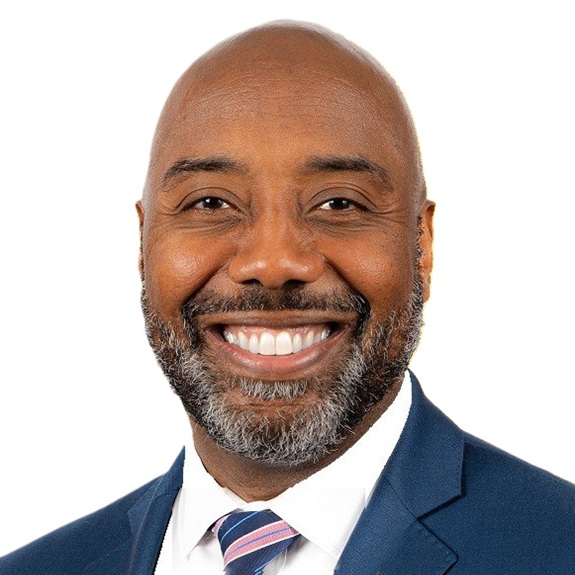No Long-Term Care Plan? Here’s What to Do About It
Small-business owner Jennifer found herself in a tough caregiving situation and doesn’t want to subject her family to that. What are her, and your, options?


You might be shocked to discover that as few as 3% Americans have a fully funded plan for long-term care expenses. Although, on second thought, maybe you wouldn’t be surprised at all — because you’re one of them. Which means, just like for everyone else, the sooner you change that, the better.
Of course, knowing you have to start and knowing where to start with long-term care planning can be two different things. So, to help, let’s consider the case of Jennifer, a 45-year-old small-business owner who lives with her husband and young son in New York.
Like many people, the busyness of life and work mean Jennifer has yet to fully lock down her long-term care preparations. However, having recently experienced the challenges of caring for a family member suffering from a serious illness, she’s now keen to get a plan in place.
From just $107.88 $24.99 for Kiplinger Personal Finance
Become a smarter, better informed investor. Subscribe from just $107.88 $24.99, plus get up to 4 Special Issues

Sign up for Kiplinger’s Free Newsletters
Profit and prosper with the best of expert advice on investing, taxes, retirement, personal finance and more - straight to your e-mail.
Profit and prosper with the best of expert advice - straight to your e-mail.
As she put it to me: “When you’re caring for someone, it’s totally all-encompassing. So, there’s a real sense of guilt because you don’t have enough time to focus on anything or anyone else. As for your own self-care, you just don’t take a back seat, you’re in the trunk! I was shocked by how quickly things can get worse, too, and how hard that is to deal with. If I need long-term care one day, I don’t want my family to have to go through the same thing.”
Jennifer’s situation is by no means unusual. And the good news is it’s not too late for her to get started. The advantages of doing so are also clear. Research shows that people with a fully funded long-term care plan tend to remain in their homes longer, get more longevity out of their retirement nest egg and benefit from the fact any payments from a properly structured plan are made tax-free.
A clear long-term care plan makes delegation easier
The value also extends beyond just economics. With a clear long-term care plan in place, it’s much easier to delegate tasks that are purely medical to a professional — stuff like getting the correct medications, choosing the right kind of bed and going to the pharmacy. This leaves your loved ones free to focus on your relationship and on spending quality time with you.
Preparing for your long-term care now also means you’re making decisions when life is stable. This is far more sensible than trying to do it when you’re already unwell or in the midst of a crisis. Plus, it helps you set a good example to your kids about being willing to make hard decisions rather than procrastinate.
So, back to Jennifer. According to the National Association of Insurance Commissioners (NAIC), most of us can expect to spend somewhere between $250,000 and $300,000 on long-term care depending, of course, on our condition and how long we require it. Broadly speaking, she has four options for how she’s going to fund that amount. (Read more about each of these options in my previous column How to Get Your Long-Term Care Planning on the Right Track.)
1. Self-fund through investments and/or sale of assets.
This option benefits from being easy to set up and flexible, as the funds can be used however you want — be that to pay for long-term care or for something else. However, it requires the most money because there’s no leverage from an insurance contract. There’s also the risk that your investment or asset suffers a loss in market value at the very time you need to pay for long-term care.
2. Buy a standalone long-term care insurance plan.
The good news here is that premiums can be tax-deductible as a business expense and that policies often include an inflation rider to protect against inflating healthcare costs. It also potentially qualifies you for your state’s Partnership Program, which lets you shelter an amount of assets equal to the amount of care funded through the contract while still qualifying for Medicaid. However, rates can increase, and there’s no accumulated cash value, which limits flexibility. Crucially, if the plan isn’t used to fund long-term care, the money is lost.
3. Set up a hybrid contract (either a life insurance contract or annuity contract) that contains a long-term care rider.
The advantages of most hybrid long-term care insurance contracts are they offer flexible premium options, have no rate increases and have an accumulated cash value. They also carry a death benefit that lets you recover the cost if you don’t need long-term care after all. That said, always check the details. In some instances, inflation riders might not be available while and the cash value accumulation and death benefit may not be fully guaranteed.
4. Rely on government Medicaid provision.
The benefit of this approach is the guaranteed access to facilities based on the payment of Medicaid premiums. However, the challenges are a loss of control over where we get old and who provides our care as well as the fact the facilities may not be of the highest quality. Note also that it requires you to prove you are “poor on paper” by moving any assets out of your name in advance.
So, taking into account Jennifer’s lifestyle and financial situation, her age and health status, her desire to have a deductible business expense for her and her spouse, her wish to have a certain benefit paid one way or the other for her invested premium and her need for flexibility in managing her care, what option should she consider?
The answer is a hybrid contract with a long-term care rider along with a self-funded account that’s conservatively invested to provide some additional flexibility and cover the elimination period, which is the amount of time you wait before the carrier begins paying out the benefit. Elimination periods vary in length and are selected by the policyholder, who is responsible for paying for services out of pocket during this time. and. To that end, a hybrid contract will allow Jennifer to pay lower premiums, partially deduct those premiums as a business expense, retain flexibility because of the multiple ways of accessing the benefit and mitigate the risk of “wasting” her premium dollars should she not ultimately need the benefit to cover long-term care.
Many people will find this combined approach is the right option for them, too. But as with Jennifer, it’s important to properly analyze your individual circumstances before making any decision, ideally with the help of a qualified financial professional. They can help you understand the options available, make the complex simple and find a way to integrate long-term care preparations into your overall financial plan without it impacting your current lifestyle.
Right now, it may feel like thinking this far ahead is just another tricky item on your already-bulging to-do list. But fast-forward a few years, and your future self and your loved ones will be very grateful that you had the courage and foresight to address this issue now.
This article has been obtained from an outside source and is provided as a courtesy by Stephen B. Dunbar III, JD, CLU, Executive Vice President of the Georgia Alabama Gulf Coast Branch, Equitable Advisors and Equitable Network do not legal or tax advice and make no representation as to the accuracy or completeness of this information. You should consult your own legal and tax advisors regarding your particular circumstance. Applications for life insurance and long-term care insurance are subject to underwriting. No insurance coverage exists unless a policy is issued and the required premium to put it in force is paid. Guarantees are based on the claims-paying ability of the issuing insurance carrier.
Stephen Dunbar offers securities through Equitable Advisors, LLC (NY, NY 212-314-4600), member FINRA, SIPC (Equitable Financial Advisors in MI & TN). Annuity and insurance products offered through Equitable Network, LLC. Equitable Network conducts business in CA as Equitable Network Insurance Agency of California, LLC, in UT as Equitable Network Insurance Agency of Utah, LLC, in PR as Equitable Network of Puerto Rico, Inc. GE-5681217.1 (5/23) (Exp. 5/25)
Profit and prosper with the best of Kiplinger's advice on investing, taxes, retirement, personal finance and much more. Delivered daily. Enter your email in the box and click Sign Me Up.

Stephen Dunbar, Executive Vice President of Equitable Advisors’ Georgia, Alabama, Gulf Coast Branch, has built a thriving financial services practice where he empowers others to make informed financial decisions and take charge of their future. Dunbar oversees a territory that includes Georgia, Alabama and Florida. He is also committed to the growth and success of more than 70 financial advisers. He is passionate about helping people align their finances with their values, improve financial decision-making and decrease financial stress to build the legacy they want for future generations.
-
 Original Medicare vs Medicare Advantage Quiz: Which is Right for You?
Original Medicare vs Medicare Advantage Quiz: Which is Right for You?Quiz Take this quick quiz to discover your "Medicare Personality Type" and learn whether you are a Traditionalist, or a Bundler.
-
 Ask the Editor: Capital Gains and Tax Planning
Ask the Editor: Capital Gains and Tax PlanningAsk the Editor In this week's Ask the Editor Q&A, Joy Taylor answers questions on capital gains tax rates and end-of-year tax planning
-
 Time Is Running Out to Make the Best Tax Moves for 2025
Time Is Running Out to Make the Best Tax Moves for 2025Don't wait until January — investors, including those with a high net worth, can snag big tax savings for 2025 (and 2026) with these strategies.
-
 Time Is Running Out to Make the Best Moves to Save on Your 2025 Taxes
Time Is Running Out to Make the Best Moves to Save on Your 2025 TaxesDon't wait until January — investors, including those with a high net worth, can snag big tax savings for 2025 (and 2026) with these strategies.
-
 4 Smart Ways Retirees Can Give More to Charity, From a Financial Adviser
4 Smart Ways Retirees Can Give More to Charity, From a Financial AdviserFor retirees, tax efficiency and charitable giving should go hand in hand. After all, why not maximize your gifts and minimize the amount that goes to the IRS?
-
 I'm an Insurance Pro: If You Do One Boring Task Before the End of the Year, Make It This One (It Could Save You Thousands)
I'm an Insurance Pro: If You Do One Boring Task Before the End of the Year, Make It This One (It Could Save You Thousands)Who wants to check insurance policies when there's fun to be had? Still, making sure everything is up to date (coverage and deductibles) can save you a ton.
-
 3 Year-End Tax Strategies for Retirees With $2 Million to $10 Million
3 Year-End Tax Strategies for Retirees With $2 Million to $10 MillionTo avoid the OBBB messing up your whole tax strategy, get your Roth conversions and charitable bunching done by year's end.
-
 'Politics' Is a Dirty Word for Some Financial Advisers: 3 Reasons This Financial Planner Vehemently Disagrees
'Politics' Is a Dirty Word for Some Financial Advisers: 3 Reasons This Financial Planner Vehemently DisagreesYour financial plan should be aligned with your values and your politics. If your adviser refuses to talk about them, it's time to go elsewhere.
-
 For a Move Abroad, Choosing a Fiduciary Financial Planner Who Sees Both Sides of the Border Is Critical
For a Move Abroad, Choosing a Fiduciary Financial Planner Who Sees Both Sides of the Border Is CriticalWorking with a cross-border financial planner is essential to integrate tax, estate and visa considerations and avoid costly, unexpected liabilities.
-
 I'm a Financial Adviser: This Tax Trap Costs High Earners Thousands Each Year
I'm a Financial Adviser: This Tax Trap Costs High Earners Thousands Each YearMutual funds in taxable accounts can quietly erode your returns. More efficient tools, such as ETFs and direct indexing, can help improve after-tax returns.
-
 A Financial Adviser's Guide to Divorce Finalization: Tying Up the Loose Ends
A Financial Adviser's Guide to Divorce Finalization: Tying Up the Loose EndsAfter signing the divorce agreement, you'll need to tackle the administrative work that will allow you to start over.